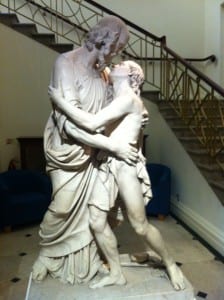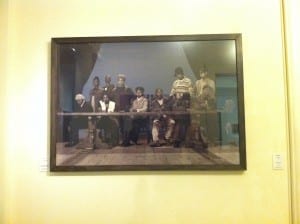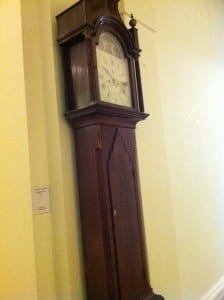“The idea that time and space are tools of the mind, our source of comprehension and consciousness, is an abstraction” (Lanza, 2012)
It can be said that time is simply an illusion, one which helps us to categorize and express different thoughts, whereas clocks are a manmade object used in an attempt to track the notion of time. Rather than time being a perception in itself, we perceive the process of repetition, much like the ticking of a clock. As humans we are programmed to associate a clocks transition from one number to another with the passing duration of time. This can easily be misconstrued as the physicality of a clock, whether it be digital or analogue, with the concept of time. We do not see time as a physical concept, but we can clearly see that clocks are a solid object which humans are able to touch, move and manipulate. “Measuring “time” doesn’t prove its physical existence. Clocks are rhythmic things. We use the rhythms of some events (like the ticking of clocks) to time other events (like the rotation of the earth). This isn’t time, but rather, a comparison of events.” (Lanza, 2012).
“We also have the sensation of duration: we can even check that sensation against a clock” (Blackwell, 2012). The passage of time is an incredibly difficult concept to grasp without the presence of a physical clock in front of you. In class, we experimented with passing a ball to one another in an open space for one minute, and then passing it amongst a tighter space created by enclosing our bodies again, for one minute (see earlier blog post “Like Clockwork” for more details). We intended to do this for 6 minutes, so theoretically we would repeat each process three times. A timer was set, and after only getting through half of our planned process, it went off. This showed us that not only can time be seen as a concept opposed to something definite, but also that each person’s perception of duration may be different, conflicting with that of a clocks.
With the idea of a clock solely being a physical being, as a group we looked into the physicality of a clock, including the mechanics behind the face. This led us onto the idea of a ‘human clock’, or rather how we could use the shapes in our bodies to represent the hands on a clock to show a passage of time. Whilst researching, we came across this video:
Although this looked incredible aesthetically, as a group of six working in a small gallery, it soon occurred to us that we have neither the capacity
nor the amount of people needed to create such a thing. This is where our search for examples of people creating changed from analogue to digital.
Example 1
Example 2
The first example shown above is what initially inspired us to incorporate an image like this into our piece, but again knowing that we do not have the right space for such a performance we decided to play around with the idea of projecting something onto the wall of Gallery 3, which we would have prerecorded. The performers in example 2 use similar skills to that of the first, but explore the idea in a much more performative way to that of the first, which is for the most part very structured. Although the pieces above explore a similar concept, they both go about it in very different ways, together they have motivated us to experiment with the creation of a clock for ourselves, coming up with something just as inspiring.
Author: Chloe Doherty
Work Cited:
– Blackwell, G (2010) Time Doesn’t Exist: A Step-by-Step Proof, Online: http://www.grahameb.com/realitycheck/?p=425 (accessed 24 February 2013)
– Lanza, R (2012) Does Time Really Exist?, Online: http://www.psychologytoday.com/blog/biocentrism/201202/does-time-really-exist (accessed 24 February 2013)



 Left: Grandfather clock
Left: Grandfather clock 






